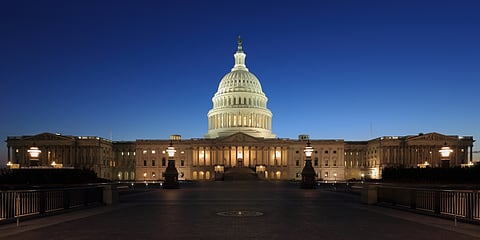

The United States government initiated a partial shutdown on Wednesday, October 1, as Congress and the White House failed to agree on a funding measure by the fiscal year's midnight deadline
This marks the 15th such closure since 1981 and the third under President Donald Trump's tenure, highlighting persistent partisan divides over budget priorities.
Deep partisan divisions prevented the passage of a stopgap funding bill, leading to the furlough of approximately 750,000 federal workers and the suspension of non-essential operations.
Agencies have warned of immediate disruptions, including the potential delay of the September employment report, slowdowns in air travel due to understaffed air traffic control and Transportation Security Administration personnel, and the withholding of pay from U.S. troops.
Scientific research will pause, and the daily economic cost is estimated at $400 million.
The impasse stems from Democrats' insistence on extending health benefits under the Affordable Care Act, set to expire by year's end, which would otherwise spike insurance premiums for millions.
Republicans, holding a 53-47 Senate majority, have refused to bundle this with funding talks, viewing it as a separate issue.
Senate Democrats blocked a Republican-backed measure on Tuesday to fund operations through November 21, while a Democratic alternative also failed to secure the required 60 votes.
Federal agencies are executing contingency plans, with essential services like Medicare, Medicaid, and Pentagon functions continuing, albeit with potential staffing delays.
The Department of Homeland Security will maintain most operations, but Smithsonian museums may close after Monday, and national parks face risks from reduced staffing, prompting calls from former superintendents for temporary closures to protect resources.
Wall Street reacted with unease, as the shutdown delays key economic reports amid broader uncertainty.
While markets have historically weathered such lapses, analysts note this episode lacks signs of imminent resolution, potentially amplifying fallout.
President Trump, pursuing a agenda to shrink the federal workforce by up to 300,000 by December, has suggested the shutdown could facilitate further cuts, targeting programs favored by Democrats.
Both parties are positioning for advantage ahead of the 2026 midterms, with blame exchanged over the stalemate.
Senate Republican Leader John Thune scheduled additional votes for Wednesday to pressure Democrats, while House Speaker Mike Johnson accused them of prioritizing confrontation with Trump.
Vice President JD Vance highlighted the human toll, warning of flight delays and unpaid essential workers. Democrats, led by Senate Majority Leader Chuck Schumer, argue the fight addresses rising health care costs hurting Americans.
No clear resolution path exists, evoking memories of the 35-day shutdown during Trump's first term and the 16-day closure in 2013.
As the standoff persists, it underscores a political climate favoring hard-line stances over compromise, with ramifications extending to benefit payments, contracts, and nationwide services.